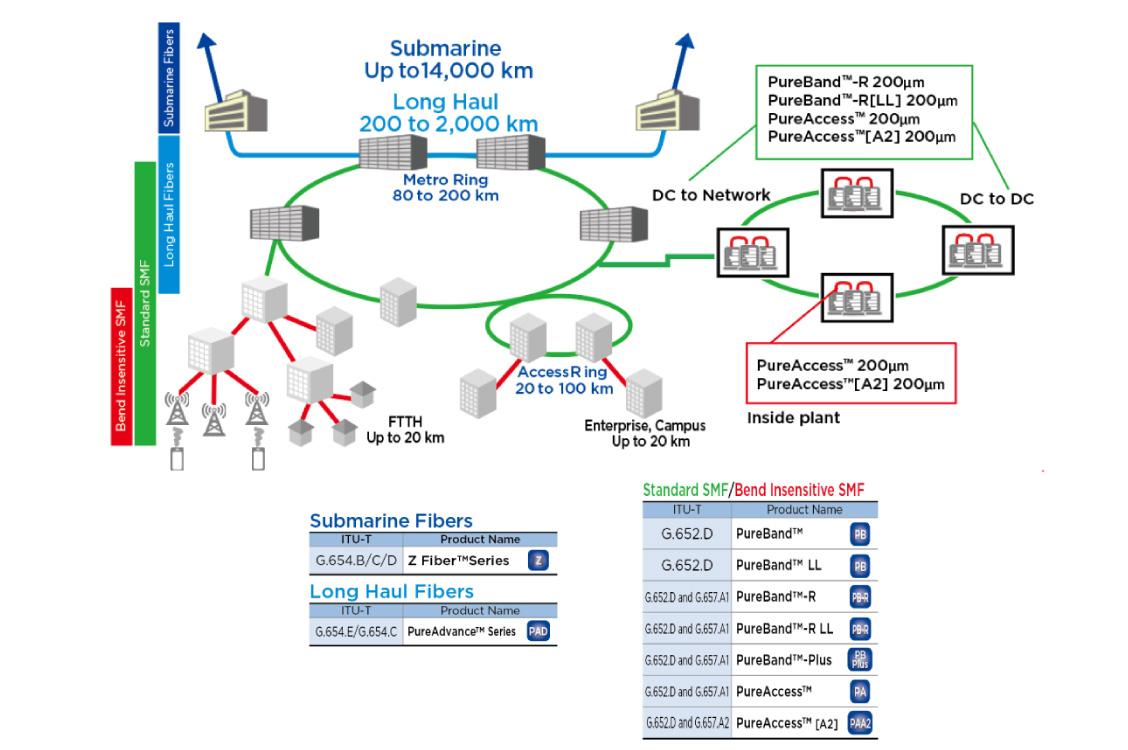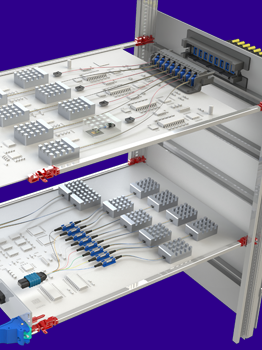
Smaller footprint cable gives more advantages for cost and energy saving
Special Contents of Reduced Diameter Fiber
Feature and Benefit
High fiber density
More effective use of existing
Cost saving
Eco Friendly
Energy saving
Thinner and lighter cable/ Lower energy and GHGs from transportation and installation
Resource saving
While minimizing additional expenses, compatibility with 250um is maintained
Space saving
Thinner cable with the same fiber count as 250μm/ Higher fiber count
Recommended Application

The Benefits of Cables with 200μm Fibers
The Benefits of Cables with 200 µm Fibers
If you're unsure about whether to use 200μm fiber for your application, we encourage you to take a look at this brochure. It provides a brief explanation of the reasons why fiber optic cables with 200μm fibers are the ideal choice for your needs.

Technical Review
Pre-connectorized Ultra High Fiber Count Cable for Easy Installation
A new preconnected ultra-high multi-core (UHFC) fiber optic cable developed to reduce installation time in data centers. The cable consists of a thin 3456-fiber optical cable made of 200-μm Freeform Ribbon fiber and a slotted core.
Small Diameter and High Density 6912 Fiber Count Cable
Structure, characteristics, and workability of small-diameter 6912-core cable using 200-μm Freeform Ribbon fiber for data center applications. 200-μm Freeform Ribbon has alternating longitudinal and transverse fiber merging and branching, resulting in high fiber density and the ability to perform mass fusion splicing.
Ultra-High-Density Microduct Optic Cable with 200 μm Freeform Ribbons for Air-Blown Installation
A newly designed ultra-high-density (UHD) microduct optical cable to be installed into microducts with airblowing technique. The UHD microduct cable employs Freeform Ribbon, in which fibers meet and split out in turn in longitudinal and transverse directions, thus allowing high fiber density and mass fusion splicing.
An Analytical Formura of Microbending Sensitivity for Reduced Diameter Optical Fibers
Thinner optical cables are required for data center networks to meet the increasing demand on communication traffic. For these cables thinner optical fibers are essential, and one of the concerns in reducing the optical fiber diameter is the is the increase in attenuation by microbending in the cabling process.
Ribbon Splice Solution
COMPARISON
Data Sheet Download
You can download all product data sheets in bulk here.
Download Technical InformationContact Us
Expert staffs relevant to the inquiris will respond you with an appropriate answer.
Consult an Expert


